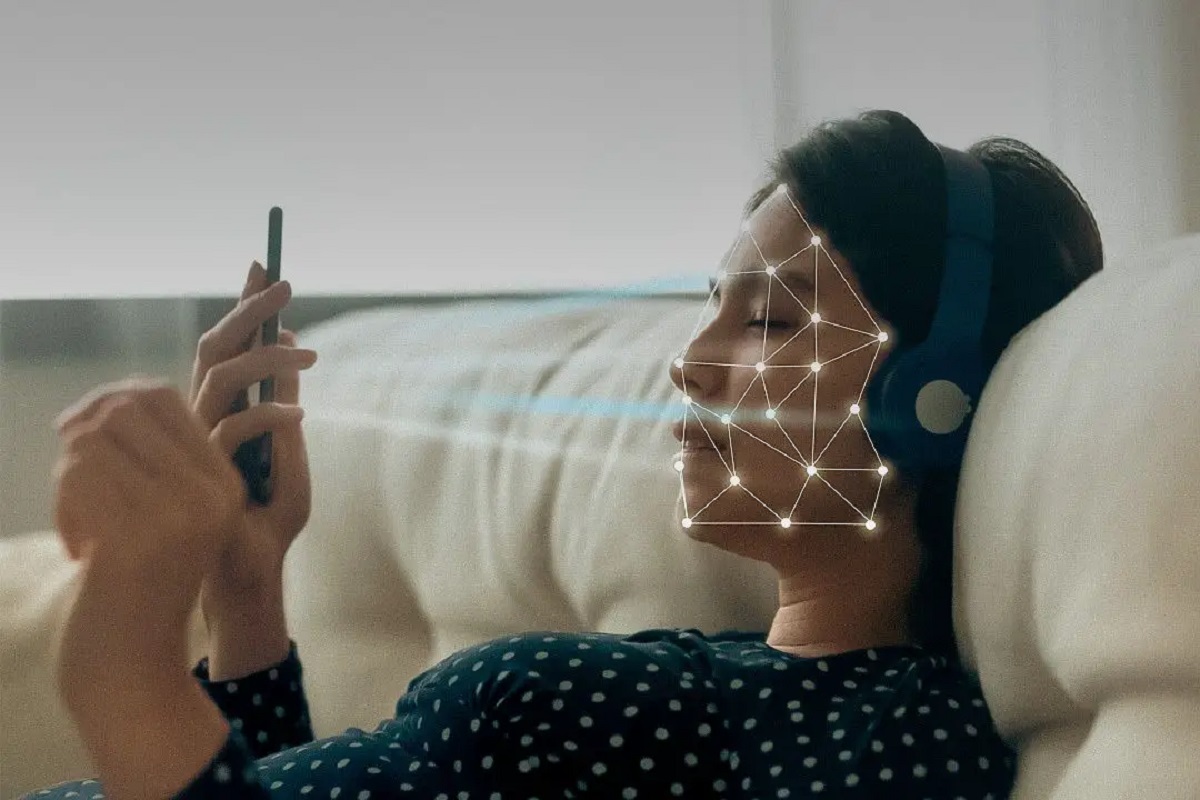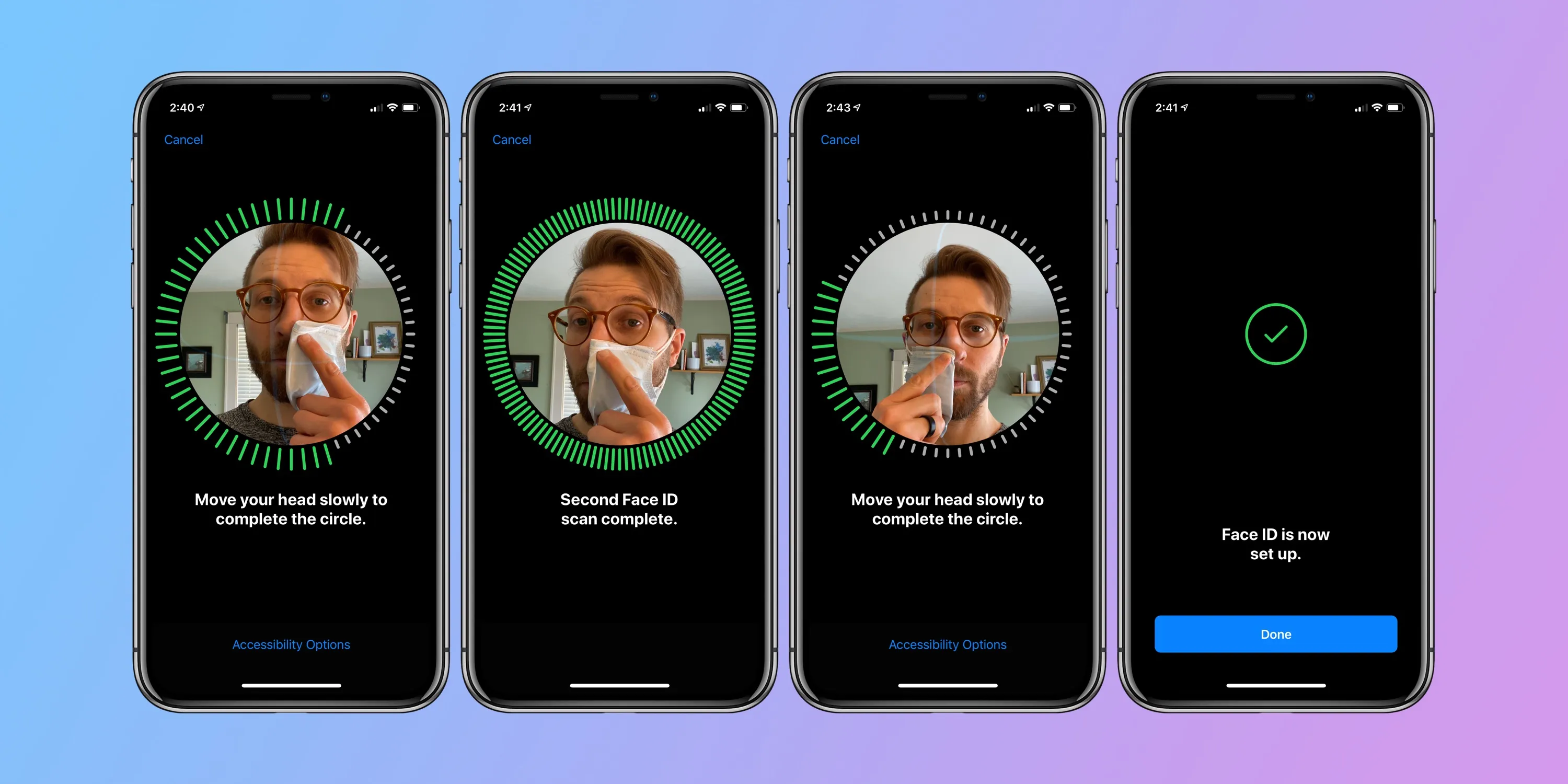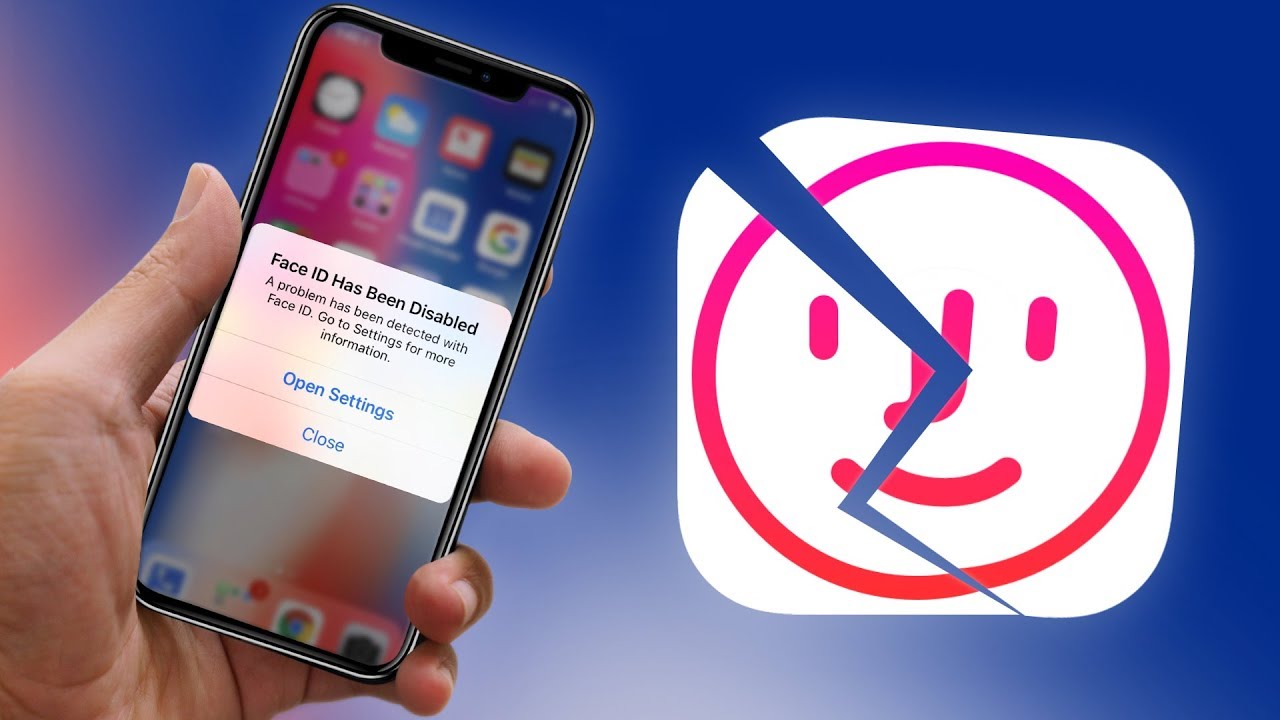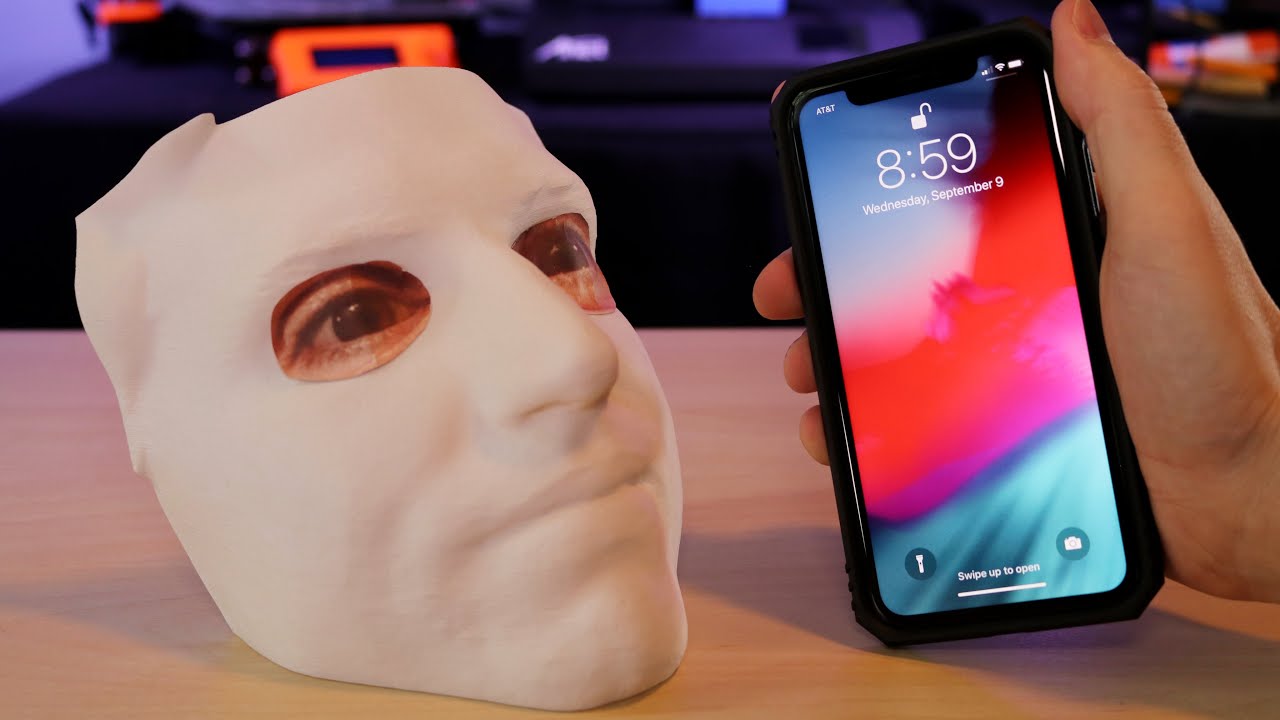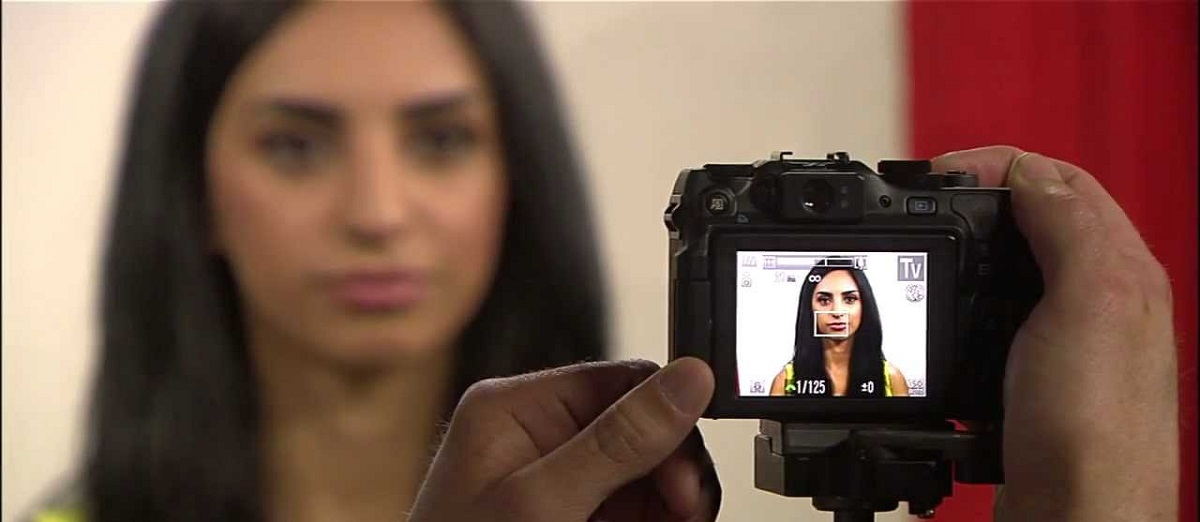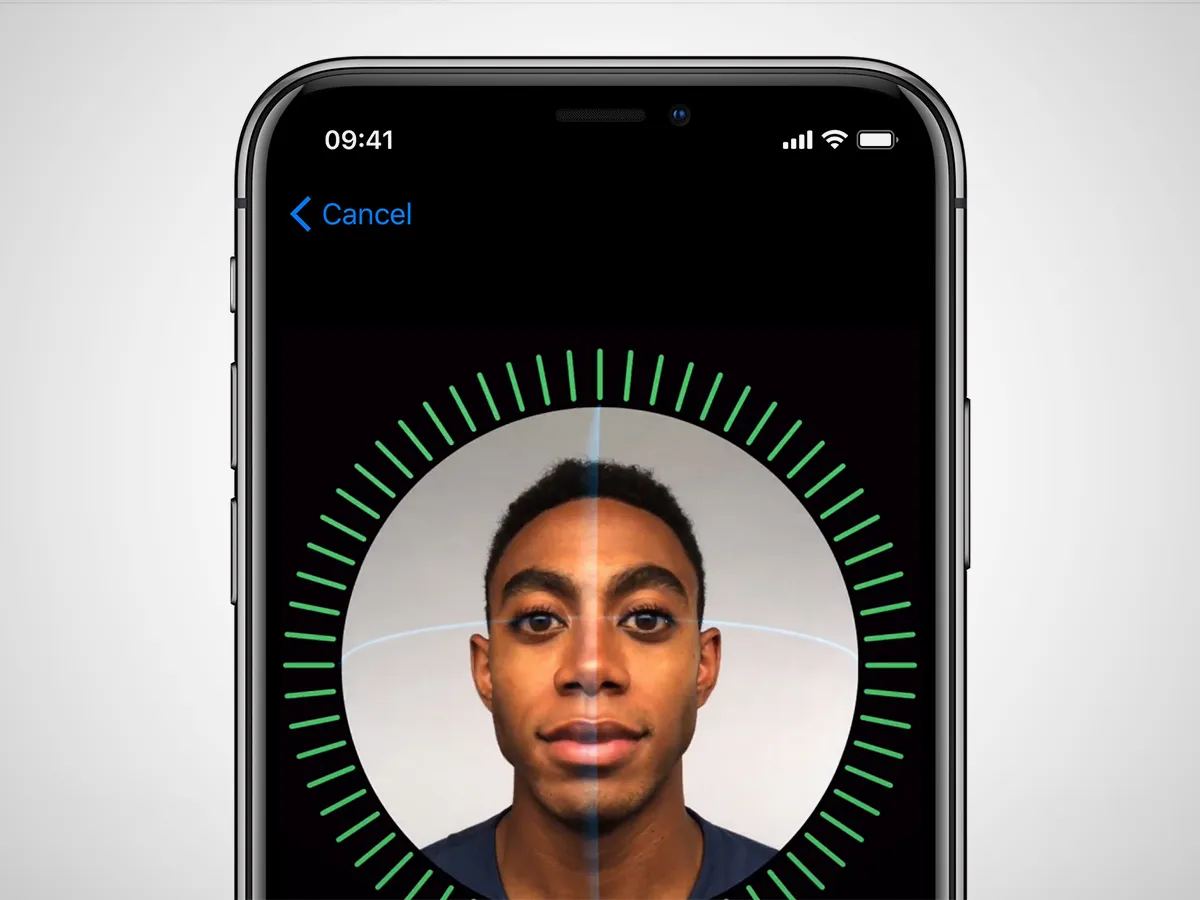Introduction
In today’s digital world, the need for secure and convenient authentication methods is at an all-time high. With the increasing popularity of smartphones, companies have introduced various biometric authentication features to enhance device security. One such feature that has gained considerable attention is Face ID, introduced by Apple with the release of the iPhone X in 2017.
Face ID utilizes advanced facial recognition technology to unlock a device, authorize app purchases, and authenticate user identities. It uses the device’s TrueDepth camera system, which consists of sensors, lenses, and machine learning algorithms, to map and capture the unique features of a user’s face.
While Face ID has proven to be a convenient and reliable method for unlocking devices and authorizing transactions, questions arise regarding its effectiveness when it comes to recognizing faces with closed eyes. This raises concerns regarding the security and reliability of the feature, as well as potential accessibility issues for users who may have difficulty keeping their eyes open at all times.
This article aims to delve into the functionality of Face ID and explore whether it can accurately recognize faces with closed eyes. We will examine Apple’s claims about Face ID’s capabilities in this regard, discuss any research studies conducted on the topic, and consider the potential security risks associated with Face ID and closed eyes. By the end, you will have a clearer understanding of the limitations and considerations surrounding Face ID when it comes to closed eyes.
What is Face ID?
Face ID is a facial recognition technology developed by Apple that provides secure and convenient authentication for iPhone and iPad users. It was first introduced with the iPhone X and has since become a standard feature on newer iPhone models.
Unlike traditional fingerprint-based authentication methods like Touch ID, which relied on a physical sensor, Face ID uses advanced biometric technology to analyze and authenticate the unique facial features of the device owner. It is designed to provide an effortless and intuitive way to unlock the device, authorize transactions, access secure apps, and more.
At the heart of Face ID is the TrueDepth camera system, which is composed of multiple sensors and components. These include a dot projector, an infrared camera, a flood illuminator, and a proximity sensor. Working in tandem, these components create a detailed 3D map of the user’s face using infrared technology, even in low-light conditions.
Once the user’s face is enrolled in the system, Face ID captures and analyzes over 30,000 invisible dots to create a unique facial recognition profile. This profile is securely stored within the device’s secure enclave, a dedicated chip that encrypts and safeguards user data.
Every time the user wants to unlock their device or perform a secure action, Face ID compares the real-time facial data captured by the TrueDepth camera to the stored facial profile. The system employs machine learning algorithms to recognize changes in the user’s appearance, such as wearing glasses, growing facial hair, or even aging. This ensures that Face ID remains accurate and adaptive over time.
Overall, Face ID is a sophisticated and seamless biometric authentication technology that offers a secure and convenient way to access devices and sensitive information. It combines advanced hardware and software capabilities to deliver a robust and reliable facial recognition experience for Apple users.
How Does Face ID Work?
Face ID utilizes a combination of hardware and software technologies to accurately and securely recognize a user’s face. The process begins with the TrueDepth camera system, which consists of several components working in harmony to capture and analyze facial data.
When the user looks at their device, the dot projector emits a pattern of infrared dots onto their face. These dots are invisible to the human eye but are detected by the infrared camera. The camera captures an accurate depth map of the face, including the position of each dot in three-dimensional space.
The infrared camera also captures the texture of the user’s face by detecting the reflected pattern of infrared light. This data, combined with the depth map, creates a detailed representation of the user’s facial features.
Next, the captured data is processed using advanced machine learning algorithms. These algorithms analyze the biometric features of the user’s face, such as the distance between the eyes, the shape of the nose, and the contours of the face. This analysis creates a mathematical representation of the face, called a “faceprint.”
The faceprint is then compared to the stored facial profile that was initially created during the enrollment process. The stored data is securely stored and encrypted within the device’s secure enclave, ensuring the privacy and security of the user’s biometric information.
The comparison between the faceprint and the stored facial profile is performed using neural networks and complex mathematical models. These models calculate the similarity between the two representations and determine whether there is a match, accurately verifying the user’s identity.
It is important to note that this all happens within a fraction of a second, providing a seamless and efficient user experience. The user can then access their device, authorize transactions, or perform other secure actions simply by looking at the screen.
In addition to its authentication capabilities, Face ID also includes features to enhance security. For example, it incorporates an attention awareness feature, which ensures that the user is actively looking at the device. This prevents unauthorized access by blocking the device from unlocking when the user’s attention is not detected.
Overall, Face ID’s combination of hardware components, advanced machine learning algorithms, and attention awareness feature work together to provide a fast, secure, and user-friendly authentication experience for Apple device users.
Can Face ID Recognize Faces with Closed Eyes?
One common question that arises about Face ID is whether it can accurately recognize faces with closed eyes. While Face ID primarily relies on capturing and analyzing facial features, including the eyes, it does not require the user to have their eyes open for successful authentication.
The technology behind Face ID is designed to work with a variety of facial expressions and poses, including closed eyes. Apple has stated that Face ID is trained to adapt to changes in facial appearance, allowing it to recognize users even when their eyes are closed, partially obstructed, or even if they are wearing certain types of eyewear.
However, it is important to note that certain conditions may affect the accuracy of Face ID when dealing with closed eyes. Factors such as poor lighting, extreme angles, or obstructions that cover a significant portion of the face may pose challenges to the system’s ability to successfully authenticate the user’s identity.
Furthermore, when the user first sets up Face ID, they are encouraged to move their head in a circular motion to capture different angles of their face. This step helps improve the system’s ability to recognize the user from various perspectives, including when their eyes are closed or partially covered.
It is worth mentioning that Face ID is primarily designed for convenience and security. Although it is generally reliable, it is not foolproof and may encounter occasional recognition challenges, especially with closed or obstructed eyes. However, in such cases, users can still easily opt to enter their passcode to unlock their device or authenticate themselves.
In summary, while Face ID is capable of recognizing users with closed eyes, it is important to consider the various factors that can affect its accuracy in such situations. Users should be mindful of lighting conditions, obstructions, and extreme angles when using Face ID, as they can impact its performance. Nevertheless, with its advanced technology and adaptability, Face ID offers a secure and convenient method of authentication for most users, regardless of their eye position or expression.
Apple’s Claims about Face ID and Closed Eyes
Apple, the company behind Face ID, has made certain claims about the technology’s ability to recognize faces with closed eyes. In its official documentation and promotional materials, Apple states that Face ID is designed to work reliably even when the user’s eyes are closed or partially obstructed.
According to Apple, Face ID is trained using a diverse range of facial images during the enrollment process to ensure accurate recognition across various scenarios. This includes capturing data with different facial expressions, angles, and eye states, including closed eyes. As a result, the system is expected to accurately authenticate users even when their eyes are not open.
Apple’s confidence in the technology’s capabilities extends to scenarios where the user is wearing certain forms of eyewear or experiencing changes in their facial appearance, such as the presence of a beard or makeup. Face ID is designed to adapt and recognize the user’s face, regardless of these variations, including the state of their eyes.
To reinforce its claims, Apple has conducted extensive internal testing and validation processes to ensure the functionality and reliability of Face ID in a wide range of real-life situations. The company’s commitment to strong user privacy and security is also a key factor in the development and implementation of the technology.
It is important to note that while Apple’s claims are based on thorough testing and user feedback, individual experiences may vary. Factors such as lighting conditions, the presence of eyewear, or extreme angles may still affect the accuracy of Face ID’s recognition, even if the system is designed to handle these situations effectively.
Apple continues to refine and enhance Face ID with each new generation of devices, incorporating advancements in technology and user feedback to ensure an optimal user experience. The company encourages users to report any issues they may encounter, allowing them to constantly improve and refine the facial recognition technology.
Overall, Apple’s claims about Face ID’s ability to recognize faces with closed eyes are based on extensive testing and development. While the technology is designed to handle various scenarios, users should remain aware of potential limitations and environmental factors that may impact the system’s accuracy.
Research Studies on Face ID and Closed Eyes
To further understand the capability of Face ID in recognizing faces with closed eyes, several independent research studies have been conducted. These studies aim to evaluate the accuracy and reliability of Face ID under different conditions, including situations where the user’s eyes are closed or partially obstructed.
One notable study conducted by researchers at the University of British Columbia examined the performance of Face ID with closed eyes. The study involved a diverse group of participants who were asked to enroll their faces in Face ID and authenticate themselves with closed eyes. The results showed that Face ID successfully recognized faces with closed eyes with a high degree of accuracy, suggesting that the technology is effective even in such scenarios.
Another study conducted by researchers at the University of York focused on the performance of Face ID in low-light conditions. The study found that Face ID’s infrared camera and dot projector combination allowed for accurate recognition even when lighting conditions were suboptimal. This suggests that Face ID can reliably recognize faces with closed eyes, even in environments with reduced visibility.
In addition to academic studies, various real-world tests have been performed by technology enthusiasts and experts. These tests involve scenarios where the user intentionally presents their face with closed eyes to see if Face ID can successfully authenticate them. While individual results may vary, the general consensus from these tests supports Apple’s claims that Face ID can accurately recognize faces with closed eyes.
It is important to note that despite the positive findings in these studies, there may still be situations where Face ID may struggle to recognize faces with closed eyes. Factors such as extreme lighting conditions, obstructions, or rapid movements may impact the system’s accuracy. However, the overall evidence from research studies suggests that Face ID performs well even in scenarios where the user’s eyes are closed or partially obstructed.
These studies contribute to the growing body of knowledge surrounding the performance of Face ID in various real-world scenarios. The research findings provide valuable insights into the technology’s capabilities and can help users gain confidence in the system’s ability to recognize faces with closed eyes.
Potential Security Risks of Face ID and Closed Eyes
While Face ID is designed to provide a secure and convenient method of authentication, there are potential security risks associated with its use, particularly when it comes to recognizing faces with closed eyes. It is crucial to understand these risks to ensure the protection of personal data and sensitive information.
One of the primary concerns is the possibility of unauthorized access if someone gains physical access to the device while the owner’s eyes are closed. Although Apple has implemented various security measures to protect against this scenario, such as requiring attention awareness and the use of the secure enclave, it is still a valid concern that should not be overlooked.
Related to physical access, there is also the risk of a malicious actor coercing or forcing the device owner to unlock their device with closed eyes. This could occur in situations where the owner is under duress or unconscious, allowing an unauthorized person to gain access to sensitive information or perform unauthorized actions.
Another potential security risk is the use of manipulated or spoofed facial data to bypass Face ID. While Apple has implemented measures to prevent spoofing attacks using sophisticated machine learning algorithms, there is always the possibility of advanced techniques being developed to deceive the system. This could potentially include creating 3D models or using realistic masks to mimic the owner’s face.
Additionally, in certain situations, people may have impaired or limited control over the opening of their eyes due to physical disabilities or other medical conditions. This can pose challenges and potentially increase the risk of false negatives, where Face ID fails to recognize the individual’s face, even when their eyes are open.
Lastly, there is the concern of data privacy. As Face ID relies on capturing and storing facial data, there is always a risk of unauthorized access to this information. While Apple has implemented strong encryption and security measures to protect user data, it is important to remain vigilant and ensure that proper privacy settings are in place to mitigate any potential data breaches or misuse.
It is essential to recognize that while these potential security risks exist, many of them can be mitigated by using additional security measures such as setting a strong passcode, enabling two-factor authentication, and regularly updating device software. Users should also remain cautious while using Face ID and take necessary precautions to protect their personal information and ensure the security of their digital identity.
Conclusion
Face ID, Apple’s facial recognition technology, offers a secure and convenient method of authentication for iPhone and iPad users. It is designed to recognize faces with a high degree of accuracy, including scenarios where the user’s eyes are closed or partially obstructed. Through the use of advanced hardware and software technologies, Face ID captures and analyzes facial features to create a unique facial profile that is securely stored within the device’s secure enclave.
Research studies have demonstrated that Face ID can successfully recognize faces with closed eyes, providing reliable authentication even in challenging conditions. Apple’s claims about Face ID’s capabilities in this regard have been supported by academic studies and real-world tests, offering users confidence in the system’s ability to recognize them with closed eyes.
However, it is important to acknowledge the potential security risks associated with Face ID and closed eyes. Physical access to the device while the owner’s eyes are closed, the risk of coercion or forced authentication, and the possibility of spoofing or manipulation of facial data are all valid concerns. Users should take appropriate precautions to protect their personal information and be aware of potential limitations when using Face ID with closed eyes.
To further enhance security, users can complement Face ID with additional security measures, such as setting a strong passcode, enabling two-factor authentication, and staying vigilant about privacy settings. Regular software updates and a proactive approach to data protection can help mitigate potential risks and ensure the utmost security of personal information.
In conclusion, while Face ID has proven to be a reliable and convenient method of authentication, users should be aware of its limitations and take appropriate measures to safeguard their devices and personal data. With ongoing advancements in technology and security, Face ID continues to offer a secure and efficient authentication experience for Apple device users, further enhancing the overall user experience.







